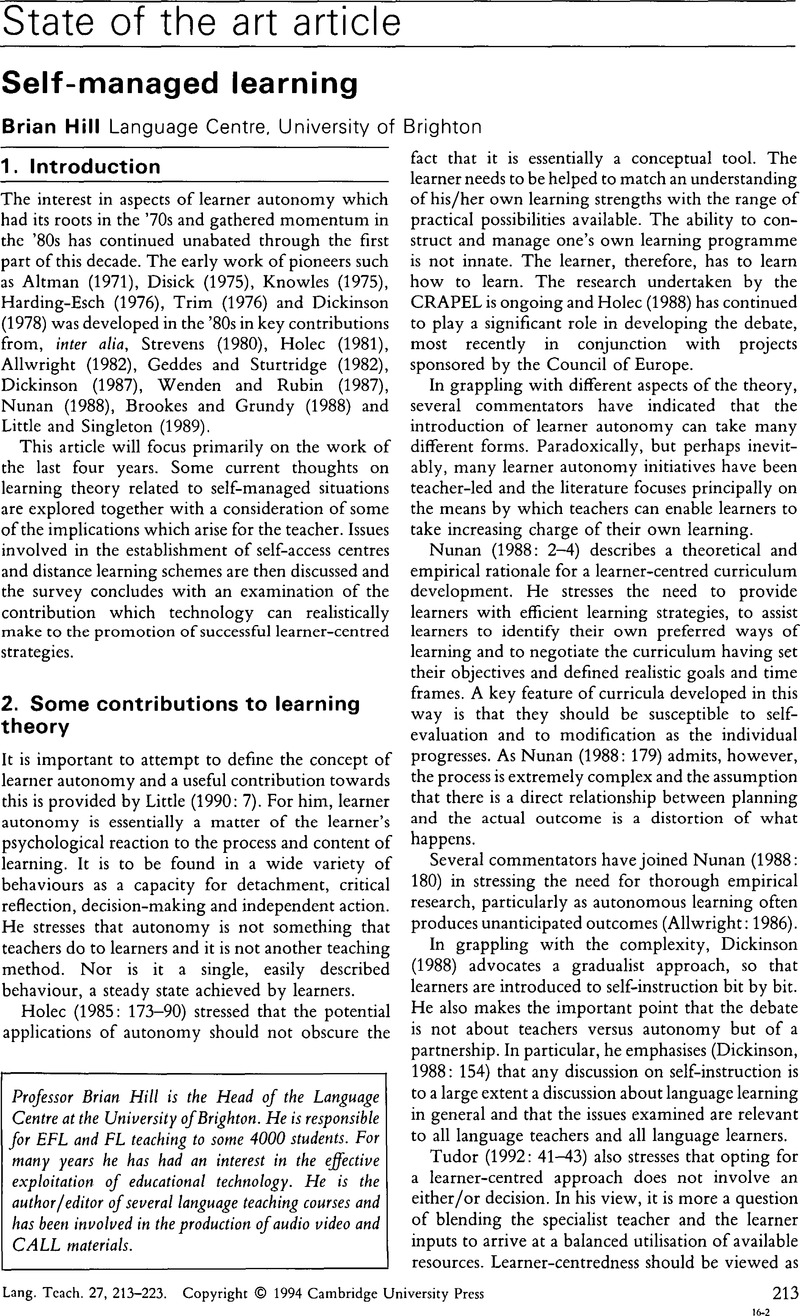Crossref Citations
This article has been cited by the following publications. This list is generated based on data provided by Crossref.
Jung, Udo O.H.
1997.
Encyclopedia of Language and Education.
p.
131.
Lee, Winnie
and
Morrison, Bruce
1998.
A Role for Newspaper Articles in Developing Autonomous Language Learning Skills.
RELC Journal,
Vol. 29,
Issue. 2,
p.
90.
Silva, Kleber Aparecido da
Bartholomeu, Maria Amélia Nader
and
Claus, Maristela M. Kondo
2007.
Auto-avaliação: uma alternativa contemporânea do processo avaliativo.
Revista Brasileira de Linguística Aplicada,
Vol. 7,
Issue. 1,
p.
89.





